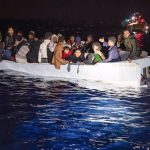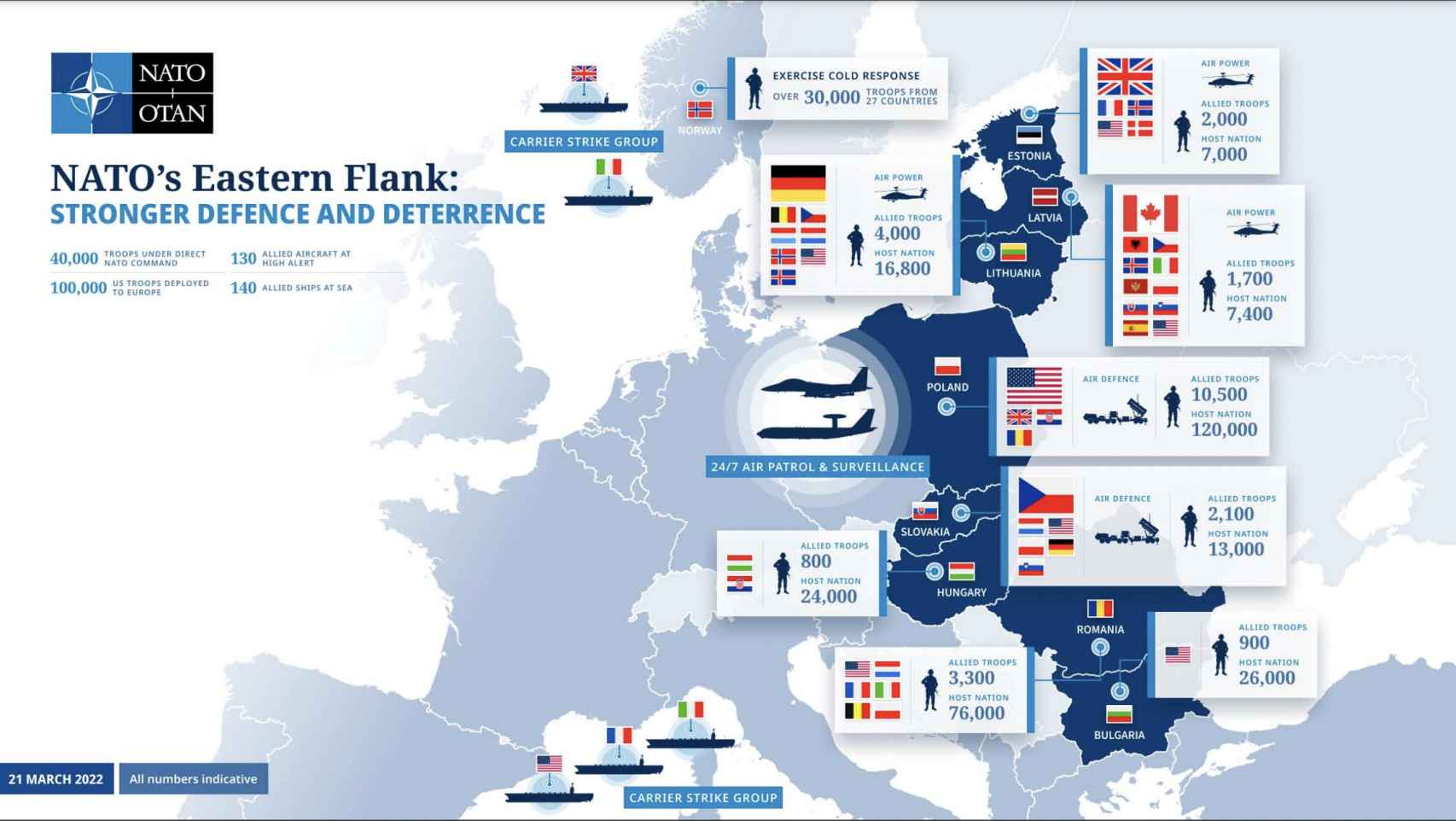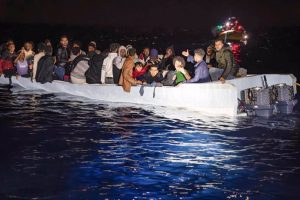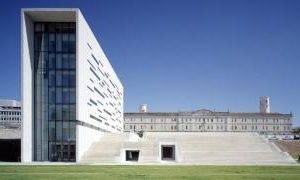Related news
the war of Vladimir Putin has awakened NATO from “brain death” – as defined by the French president, Emmanuel Macron– and puts it back at the center of the international scene.
The summit that begins this Tuesday in Madrid is shaping up to be one of the most important in its 70-year history, since it has to respond to the tectonic changes caused by the conflict in Ukraine on the security situation in Europe.
In a meeting that has been defined primarily as “transformer”the 30 heads of state and government of the Atlantic Alliance plan to give the green light to a new assistance package for Ukraine.
[Mircea Geoana, número 2 de la OTAN: “Confiamos en que España aumentará el gasto en defensa”]
In addition, the allied leaders will approve the new ‘strategic concept’ (NATO’s military doctrine between now and 2030), as well as an unprecedented reinforcement of the eastern flank. Finally, the Madrid summit will try to unblock the candidatures of Finland and Sweden.
Assistance to Ukraine
“The Government and people of Ukraine continue to resist Russia’s brutal war of aggression. Their courage and commitment are an inspiration,” said the Secretary General of the Alliance, Jens Stoltenberg. NATO leaders will again listen to the demands of the Ukrainian president, Volodymyr Zelenskywho finally has not been able to go to Madrid in person and will participate by videoconference.
NATO’s current deployment on the Eastern flank
The summit will then agree on a comprehensive assistance package for Ukraine, which will include support measures in areas such as secure communications, anti-drone systems and fuel. In the longer term, NATO is committed to assisting kyiv in transition from their current Soviet-era military equipment others modern and compatible with the Alliance, as well as in the strengthening of its defense and security institutions.
At the same time, the member countries will renew their promise to continue providing kyiv with weapons to fight Russia, although these deliveries are made bilaterally and not through NATO. The Alliance wants to avoid any risk of coming into direct conflict with Moscow. That is why he has rejected all of Zelensky’s requests to establish a no-fly zone or send a peacekeeping mission to Ukraine.
New strategic concept
The new ‘strategic concept’, NATO’s military doctrine for the next decade, will define Russia as “the most significant and direct threat to our security”, according to Stoltenberg. This represents a radical change with respect to the current strategic concept, which was approved at the Lisbon summit in 2010, in which the then Russian president, Dmitri Medvedev, participated. At that time, the Atlantic Alliance considered Russia a “strategic ally”.
At the request of the United States, NATO’s military doctrine will mention China as a cause for concern for the first time. Specifically, says the secretary general, “the challenges that Beijing poses to our security, interests and values.” Threats such as terrorism, cyber attacks or hybrid threats will also be included.
The government of Pedro Sanchez intends that the ‘strategic concept’ also includes threats from the southern flank of NATO, such as the use of migration or energy as weapons of pressure against allies or political instability and the rise of jihadist terrorism in the Sahel . Stoltenberg has avoided guaranteeing in advance the defense of Ceuta and Melilla against a military attack and points out that it will be a “political decision” that the 30 members must take unanimously.
Eastern flank reinforcement
“This is the largest review of our collective deterrence and defense since the Cold War,” Stoltenberg says. In response to the Kremlin threat, the Atlantic Alliance plans reinforce the battalions deployed on the eastern flank (composed of around 1,000 soldiers) until reach brigade level (between 3,000 and 5,000 troops).
In addition, NATO will transform its Rapid Response Force and increase more than 300,000 the number of troops ready to deploy immediately. Currently, the Rapid Response Force is made up of up to 40,000 troops with the capacity to deploy to any scenario within five days. That is, the change multiply by seven the number of soldiers on high alert.
Since the start of the Ukraine war, NATO has deployed four new battalions in Bulgaria, Hungary, Romania and Slovakia. Some forces that are added to those that already existed in Estonia, Lithuania, Latvia and Poland. In total, there are 40,000 troops under direct Alliance command on the Eastern flank.to which must be added 100,000 US soldiers stationed in Europe.
Gasto en defensa en los países de la OTAN
De momento, no hay una estimación oficial de las tropas adicionales de la OTAN que se aprobarán en Madrid. El refuerzo a nivel de brigada se desplegará en algunos de los ocho países que ahora tienen batallones, pero no en todos (Stoltenberg no ha aclarado cuáles). Además, no todos los soldados extra se estacionarán de forma permanente en el flanco Este, sino que una parte estarán simplemente “preasignados” para acudir a un país en concreto en caso de ataque.
Para poder financiar este despliegue, los líderes de la OTAN reafirmarán en Madrid su compromiso de alcanzar cuanto antes el objetivo de gastar en defensa al menos el 2% del PIB. La Alianza confía en que España -que ahora mismo está a la cola en inversión militar- haga también algún anuncio en este sentido.
Entrada de Finlandia y Suecia
Stoltenberg todavía cree posible un acuerdo en la cumbre de Madrid sobre la adhesión de Finlandia y Suecia. Los dos países presentaron en mayo de forma conjunta sendas solicitudes para entrar en la OTAN. Un paso que pone fin a su tradicional política de neutralidad militar y cuyo objetivo es protegerse de la amenaza de Rusia: es decir, que no les pase lo mismo que Ucrania.
Sin embargo, lo que se preveía como una entrada acelerada y sin problemas ha chocado con el veto de Turquía. El presidente Recep Tayyip Erdogan acusa a Estocolmo y Helsinki de dar cobijo a activistas del Partido de los Trabajadores del Kurdistán (PKK), considerado una organización terrorista tanto por la UE como por EEUU. También critica el embargo militar que los dos países nórdicos han impuesto a Turquía.
Aunque tanto Finlandia como Suecia alegan que cumplen todos los requisitos para entrar de inmediato en la OTAN, ambos países han aceptado entrar en una negociación directa con Turquía en la que Stoltenberg ejerce de mediador. El diálogo continuará durante la cumbre de Madrid, al máximo nivel, con la esperanza de lograr la fumata blanca.












Add Comment